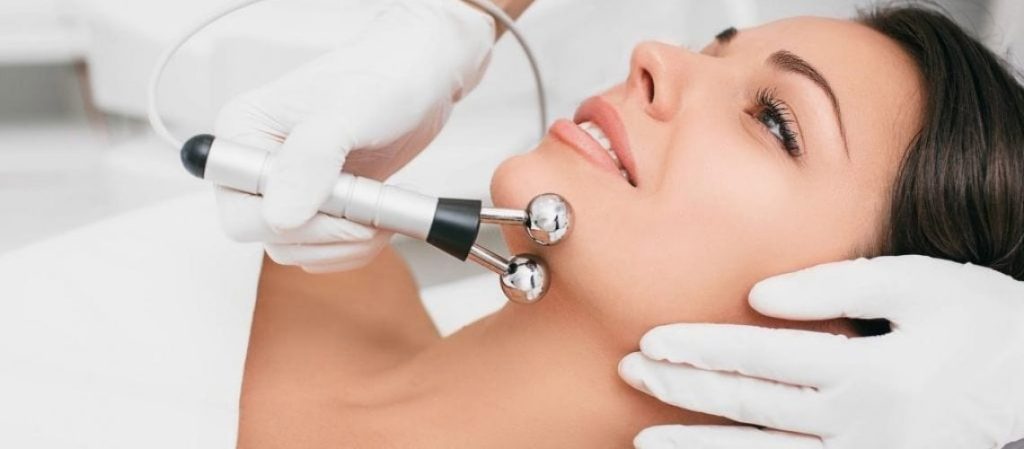Microcurrent facial devices have become a popular at-home beauty treatment, promising non-invasive skin rejuvenation, facial lifting, and muscle toning. However, as with any skincare device, safety is a primary concern. So, are microcurrent facial devices safe? Let’s break it down.
What is Microcurrent Technology?
Microcurrent facial devices work by delivering low-level electrical currents to stimulate facial muscles and promote the production of collagen and elastin. This is similar to how electrical impulses are used in professional treatments to lift and tone the muscles. The idea is that these microcurrents help re-educate the muscles and improve skin appearance over time.
Safety of Microcurrent Devices
For the vast majority of users, microcurrent facial devices are safe when used properly. These devices are designed to be gentle, using low-level currents that are well below the level of electrical current that would cause harm. However, there are some considerations and guidelines to follow to ensure that you are using them safely.
1. FDA-Cleared Devices
The first thing to check when considering the safety of any microcurrent device is whether it is FDA-cleared for use. FDA approval ensures that the device has undergone rigorous testing for safety and effectiveness. Many reputable brands have FDA-cleared devices that meet the necessary standards for home use.
- Tip: Look for a device that specifically mentions "FDA-cleared" or "FDA-approved" to ensure it has passed safety standards.
2. Correct Use and Instructions
Microcurrent facial devices are generally safe when used according to the manufacturer’s guidelines. Following the correct instructions is essential for both the safety and effectiveness of the device.
- Do’s:
- Apply a conductive gel or serum before use: This ensures the current travels smoothly through the skin and prevents irritation.
- Start with lower settings: If you are new to microcurrent treatments, it’s important to begin with a lower intensity setting and gradually increase as your skin becomes accustomed.
- Use on clean, dry skin: Avoid using the device on wet or oily skin as this can reduce the effectiveness and may cause discomfort.
- Don’ts:
- Avoid overuse: Using the device too frequently or for too long can cause temporary skin irritation or discomfort.
- Don’t use it near the eyes without specific attachments: Some devices have smaller tips or attachments for the eye area. Using the device incorrectly on delicate areas may lead to irritation.
3. Contraindications: Who Should Avoid Microcurrent Devices?
While most people can safely use microcurrent facial devices, there are some contraindications. If you fall into any of the following categories, you should either avoid using these devices or consult with a doctor beforehand:
- Pregnancy: Pregnant women should avoid using microcurrent devices, as the electrical currents may affect the baby or cause muscle contractions.
- Pacemakers or Heart Conditions: People with heart conditions or who have pacemakers should avoid using microcurrent devices as the electrical impulses could interfere with the device or affect the heart.
- Epilepsy: Those with epilepsy should not use microcurrent devices, as electrical stimulation could trigger seizures.
- Metal Implants: Individuals with metal implants, especially near the face (e.g., metal plates or pins), should consult a healthcare provider before using a microcurrent device.
- Open Wounds or Skin Conditions: Avoid using the device on broken skin, cuts, rashes, or sunburned areas. The electrical current could cause irritation or exacerbate skin conditions.
4. Side Effects
For most people, microcurrent therapy is well-tolerated and has minimal side effects. However, some users may experience:
- Redness or Warmth: It’s common to experience slight redness or warmth on the treated areas, similar to the effects of light exercise. This is due to increased circulation and should subside within a few minutes.
- Mild Skin Irritation: Some users may feel slight discomfort, tingling, or tightness in the skin during or after the treatment. This should not be painful, and the sensation will typically disappear quickly.
- Temporary Puffiness: Some people experience slight puffiness or swelling, particularly after the first few treatments, but this is usually temporary and will go away as your skin gets used to the treatment.
5. Professional vs. At-Home Devices
Microcurrent treatments used by professionals in spas or dermatology clinics are typically stronger than the devices available for home use. The professional devices may deliver higher currents for more dramatic results. Home-use devices are generally designed to be safe, with lower current levels that still produce visible results but without the risk associated with higher-powered devices.
- Tip: If you're looking for quicker results or if you have more advanced skincare needs, you may consider professional treatments. However, home-use devices can still offer excellent results with consistent use.
6. How to Ensure Safe Use
Here are some tips to keep your microcurrent treatments safe:
- Read the Manual: Always carefully read the user manual and safety instructions for your device before use. Each device has its own specific guidelines.
- Patch Test: If you have sensitive skin, perform a patch test on a small area of your face before using the device on your entire face.
- Use the Right Products: Always use the recommended conductive gel or serum. Avoid using the device with regular moisturizers, as they are not designed for conductivity and may cause irritation.
Conclusion: Is It Safe?
In general, microcurrent facial devices are safe for most people when used properly. They are a non-invasive, effective method for lifting, toning, and rejuvenating the skin. However, it’s essential to follow the manufacturer’s instructions carefully, use the device with the recommended products, and ensure that you don’t have any conditions that could make using the device unsafe.
If you have any doubts or specific concerns, especially regarding health conditions or skin sensitivities, it’s always a good idea to consult with a dermatologist or healthcare professional before starting treatment.
With the right precautions and consistent use, microcurrent devices can be a safe and effective addition to your skincare routine!
